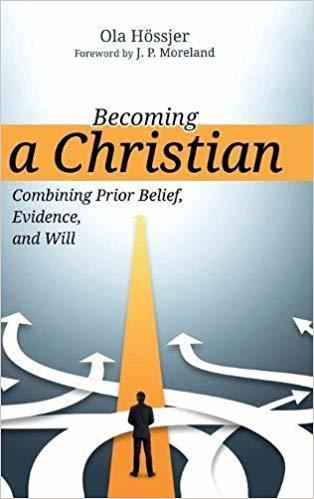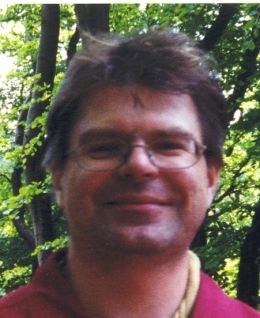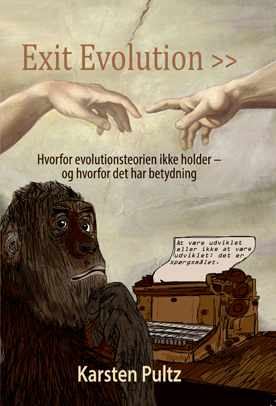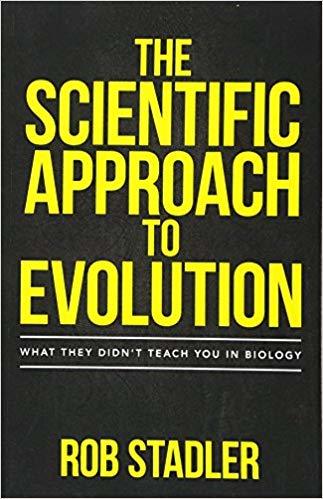Michael J. Behe's Blog, page 499
April 8, 2019
Extended evolutionary synthesis: Struggling with change in evolutionary biology
At the big Brazilian ID blog, someone spotted this in the wake:
Theory in Biosciences
November 2018, Volume 137, Issue 2, pp 169–184 | Cite as
The emerging structure of the Extended Evolutionary Synthesis: where does Evo-Devo fit in?
Alejandro Fábregas-Tejeda, Francisco Vergara-Silva
First Online: 21 August 2018
Abstract
The Extended Evolutionary Synthesis (EES) debate is gaining ground in contemporary evolutionary biology. In parallel, a number of philosophical standpoints have emerged in an attempt to clarify what exactly is represented by the EES. For Massimo Pigliucci, we are in the wake of the newest instantiation of a persisting Kuhnian paradigm; in contrast, Telmo Pievani has contended that the transition to an EES could be best represented as a progressive reformation of a prior Lakatosian scientific research program, with the extension of its Neo-Darwinian core and the addition of a brand-new protective belt of assumptions and auxiliary hypotheses. Here, we argue that those philosophical vantage points are not the only ways to interpret what current proposals to ‘extend’ the Modern Synthesis-derived ‘standard evolutionary theory’ (SET) entail in terms of theoretical change in evolutionary biology. We specifically propose the image of the emergent EES as a vast network of models and interweaved representations that, instantiated in diverse practices, are connected and related in multiple ways. Under that assumption, the EES could be articulated around a paraconsistent network of evolutionary theories (including some elements of the SET), as well as models, practices and representation systems of contemporary evolutionary biology, with edges and nodes that change their position and centrality as a consequence of the co-construction and stabilization of facts and historical discussions revolving around the epistemic goals of this area of the life sciences. We then critically examine the purported structure of the EES—published by Laland and collaborators in 2015—in light of our own network-based proposal. Finally, we consider which epistemic units of Evo-Devo are present or still missing from the EES, in preparation for further analyses of the topic of explanatory integration in this conceptual framework.
Keywords Extended Evolutionary Synthesis Evolutionary biology Paradigm Scientific research program Epistemic units Evo-Devo
They sound so cautious, feeling their way through the ruins of the certainties of classical neo-Darwinism—the kind where it was easy to wreck people’s careers over doubt.
Hat tip: Pos-darwinista
Follow UD News at Twitter!
See also: Researchers: Microbes jeopardize neo-Darwinism (and Jon Bartlett’s response) Jonathan Bartlett: Note how the fact that mutations are no longer considered “environmentally blind” was thrown in at the end, almost as if they were hoping that reviewers didn’t catch it.
Copyright © 2019 Uncommon Descent . This Feed is for personal non-commercial use only. If you are not reading this material in your news aggregator, the site you are looking at is guilty of copyright infringement UNLESS EXPLICIT PERMISSION OTHERWISE HAS BEEN GIVEN. Please contact legal@uncommondescent.com so we can take legal action immediately.
Plugin by Taragana
April 7, 2019
At Forbes: Fine-tuning really is a problem for cosmology, about which nothing can be done
 Big Bang/NASA
Big Bang/NASABecause those are the Rules:
The whole point of a fine-tuning argument isn’t to declare that we have a weird coincidence, and therefore anything that explains this coincidence is likely to be right. Rather, it points us to the various ways we might think about an otherwise unexplained puzzle, to try and provide a physical explanation for a phenomenon that has no obvious cause.
In science, our goal is to describe everything we observe or measure in the Universe through natural, physical explanations alone.
What if the explanation is actually outside the universe? What if the explanation for how a novel came to be written lies outside the novel?
When we see what appears to be a cosmic coincidence, we owe it to ourselves to examine every possible physical cause of that coincidence, as one of them might lead to the next great breakthrough. That doesn’t mean you should credit (or blame) a particular theory or idea without further evidence, but the possible solutions we can theorize do tell us where it might be smart to look.
As always, we have strict requirements for any such theory to be accepted, which includes reproducing all the successes of the previous leading theory, explaining these new puzzles, and also making new predictions about observable, measurable quantities that we can test. Until a new idea succeeds on all three fronts, it’s only speculation. But that speculation is still incredibly valuable. If we don’t engage in it, we’ve already given up on discovering new fundamental truths about our reality. Ethan Siegel, “Fine-Tuning Really Is A Problem In Physics” at Forbes
If the evidence strongly suggests fine-tuning, the most likely explanation is that it is a set of givens, from outside the universe we actually study. Sadly, cosmologists engage in nonsense speculations about a multiverse, for which there is no evidence and maybe never can be because they cannot accept the evidence that exists. Maybe that is the cause of the current stalemates around dark matter and antimatter.
So here’s where it stands: They’re compelled to stumble and make up nonsense and the rest of us are compelled to support them, cheer them on, and accept the dismal outcome, forever if need be.
Follow UD News at Twitter!
See also: Forbes’ cosmology commentator: Maybe we ARE alone
Why does matter, nbot antimatter, dominate the universe? We don’t know.
and
What becomes of science when the evidence does not matter?
Copyright © 2019 Uncommon Descent . This Feed is for personal non-commercial use only. If you are not reading this material in your news aggregator, the site you are looking at is guilty of copyright infringement UNLESS EXPLICIT PERMISSION OTHERWISE HAS BEEN GIVEN. Please contact legal@uncommondescent.com so we can take legal action immediately.
Plugin by Taragana
Swedish mathematician explains why he sees design in nature (and became a Christian)

Karsten Pultz,, our honorary Danish correspondent, reviews a recent book by Ola Hössjer, Becoming a Christian: Combining Prior Belief, Evidence, and Will. The foreword is by J. P. Moreland.
 Karsten Pultz
Karsten PultzNormally I would never buy a book written by a mathematician for the reason that I’m not a big mathhead myself and find it exhausting to try to grasp even the most basic concepts of mathematics. Recently though I made an exception and bought Becoming a Christian: Combining Prior Belief, Evidence, and Will by Swedish professor of mathematics Ola Hössjer and was glad I took the risk.
I had bumped into Hössjer, in a literary way, as one of the authors of the important work Theistic Evolution: A Scientific, Philosophical, and Theological Critique, a “must-have” for ID nerds. There, Hössjer co-authors a chapter on population genetics (arguing for an original couple) which involves statistical mathematics, his field of expertise.
Becoming a Christian: Combining Prior Belief, Evidence, and Will reveals that Hössjer is not only an excellent scientist who has done thorough research into many fields beyond his profession, but also a really good writer—and not at all boring, as I would have expected a mathematician to be.
Hössjer is one of the few important ID proponents from my side of the Pond (ID is still in its infancy stage in Europe). Because this book is written in English, it gives the English-speaking part of the world an opportunity to get acquainted with an ID proponent who, for once, is European.
The book takes the overapp approach of “Pascal’s wager.” The great scientist and philosopher Blaise Pascal viewed the worldview each one of us holds as a gamble, a gamble we are forced to participate in simply because we have been born into this world. Hössjer analyzes, from a completely cool and rational view, the pros and cons of whether to become a Christian. He uses purely rational arguments of the sort that would count if you were going to bet on a horse. For this reason, the arguments from intelligent design, both those of cosmological fine-tuning and design in biology, plays an important role in Hössjer’s book.
 Ola Hössjer
Ola Hössjer We cannot know if Christianity is true, and if you haven’t met Jesus face to face or experienced some sort of life-changing epiphany, you will have to base your choice of worldview on the evidence to which you have access. You’ll have to take a critical look at the evidence for and against before you decide which worldview to put your money on. According to Pascal’s wager, it’s all about taking a cool decision and the coolest of all is, of course, to base your decision on mathematics. Very wisely, Hössjer has placed the pure math at the end of the book. If you happen to love math you’ll probably be very excited about the seven appendices.
The book is a great read for all interested in ID, Christianity, and the connection between the two. It is also inspiring if you, like me, believe that the decision to become a Christian should be taken on rational grounds, should be based on evidence, and should feature the subtle awareness that it is a sort of bet.

Karsten Pultz is the author of Exit Evolution.
See also: Denmark: Slowly Developing A Conversation About Design In Nature
Something Is Rotten In Something Is Rotten In The State Of Denmark
and
Denmark: Perhaps Not So Rotten After All
Copyright © 2019 Uncommon Descent . This Feed is for personal non-commercial use only. If you are not reading this material in your news aggregator, the site you are looking at is guilty of copyright infringement UNLESS EXPLICIT PERMISSION OTHERWISE HAS BEEN GIVEN. Please contact legal@uncommondescent.com so we can take legal action immediately.
Plugin by Taragana
Steve Meyer’s new book: Return of the God Hypothesis
Media personality and author Eric Metaxas interviews philosopher of science Steve Meyer, author of Darwin’s Doubt and Signature in the Cell:
According to a nationwide survey, more than two-thirds of atheists and one-third of agnostics believe that “the findings of science make the existence of God less probable,” while nearly half of self-identified theists believe “the findings of science are neutral with regard to the existence of God.” But what if there is another option? What if the discoveries of science actually lend support to belief in God?
What’s really interesting is that in an era of elite virtue signals, oblivious to reason, a significant number of people want to know where the evidence points. The vid has gotten nearly 6500 views since March 18.
Apparently, Meyer has a new book in the works (August 20, 2019):
The Return of the God Hypothesis: Compelling Scientific Evidence for the Existence of God
From the publisher (HarperOne):
In 2004, Stephen C. Meyer, one of the preeminent scientists studying the origins of life, ignited a firestorm of media and scientific controversy when a biology journal at the Smithsonian Institution published his peer-reviewed article advancing the theory of Intelligent Design. Then, in his two bestselling books, Signature in the Cell and Darwin’s Doubt, he helped unravel a mystery that Charles Darwin did not address: how did life begin? and offered further scientific proof to bolster his arguments on the history of life and our origins, concluding that life was designed.
In those previous books, Meyer purposely refrained from attempting to answer questions about “who” might have designed life. Now, in The Return of the God Hypothesis, he brings his ideas full circle, providing a reasoned and evidence-based answer to the ultimate mystery of the universe, drawn from recent scientific discoveries in physics, cosmology, and biology.
Meyer uses three scientific points to refute popular arguments put forward by the “New Atheists” against the existence of God:
The evidence from cosmology showing that the material universe had a beginning.
The evidence from physics showing that, from the beginning, the universe was been “finely tuned” to allow for the possibility of life.
The evidence from biology showing that since the universe came into being, large amounts of genetic information present in DNA must have arisen to make life possible.
In analyzing the evidence from these three fields, Meyer reveals how the data support not just the existence of an intelligent designer of some kind—but the existence of a theistic creator.
Hat tip: Philip Cunningham
Follow UD News at Twitter!
See also: Eric Metaxas interviews Michael Behe
Copyright © 2019 Uncommon Descent . This Feed is for personal non-commercial use only. If you are not reading this material in your news aggregator, the site you are looking at is guilty of copyright infringement UNLESS EXPLICIT PERMISSION OTHERWISE HAS BEEN GIVEN. Please contact legal@uncommondescent.com so we can take legal action immediately.
Plugin by Taragana
Darwinism flunks science criteria, says biomedical engineer

In The Scientific Approach to Evolution, biomedical engineer Rob Stadler applies quality science reasoning to the popular Darwin sludge. Here he offers UD readers a rundown:
When assessing the validity of a scientific theory, the available evidence should not be weighted equally as if it were equally valid. Rather, the evidence must be prioritized according to the level of confidence that it provides. Evidence that provides high confidence must be prioritized over evidence that only provides low confidence.
Guidelines for the practice of medicine and agencies like the Food and Drug Administration have long recognized that higher confidence evidence is:
1) repeatable, 2) obtained through prospective study (i.e., through experiments designed in advance to block out confounding factors, rather than through retrospective study), 3) directly measured (e.g., blood pressure measured directly via an arterial catheter, rather than indirectly measured via a cuff around the arm), 4) obtained with minimal bias, 5) obtained with minimal assumptions, and 6) summarized with sober judgement, not amplified or extrapolated beyond the experimental conditions.
These 6 criteria can be applied to any field of science to indicate the relative level of confidence in the available evidence. The criteria are not black-and-white, but rather provide a spectrum of levels of confidence.
Applying these 6 criteria to the evidence for evolution results in a clear dichotomy between evidence that only provides very low confidence and evidence that provides very high confidence.
The commonly cited evidence for evolution (e.g., the fossil record, homology, and vestigial organs) do not meet any of the 6 criteria for high-confidence science.
For example, the process that produced the life-forms found in the fossil record cannot be repeated, cannot be directly measured, and cannot be studied prospectively.
Also, interpretations of the fossil record are replete with bias and are based upon many assumptions (for example, we are asked to assume that a life-form that is not found in a given layer of fossils did not exist at that time, yet we also are asked to assume that absence of
transitional fossils in the fossil record does not imply that they did not exist).
Finally, the interpretation of the fossil record (i.e., the effort to explain how the life-forms contained in the fossil record came to exist) extrapolates far from the actual evidence (fossilized bones) to try to explain the process responsible for the origination of the life-forms. The very low confidence provided by this type of evidence cannot provide clarity; it can only provide fuel for endless debate.
In stark contrast, experimental evolution studies like Richard Lenski’s Long Term Evolution Experiment (LTEE) meet all 6 criteria and provide very high confidence.
Experimental evolution can be repeated, can be studied prospectively and directly measured, with minimal bias and assumptions, and the results can be summarized with sober judgement.
The evidence from these high-confidence experimental evolution studies simply must be prioritized over the low-confidence evidence.
Yet, biology textbooks routinely prioritize the low-confidence evidence over the high-confidence evidence. The high-confidence evidence from experimental evolution studies paint a highly constrained picture of evolution.
For example, Lenski’s 70,000 generations of E. coli show that evolution is highly constrained – unable to produce the innovations necessary to change body plans over time or to produce new molecular machinery. The orphan genes that are prevalent in all life-forms cannot be explained by the evolution observed in these studies.
When high-confidence evidence is appropriately prioritized over low-confidence evidence, the result is a profound new view of evolution – one that they did not teach you in biology.
That’s all correct, of course, and the reader is invited to peruse Stadler’s 2016 book. But the reality is, few people of consequence care for the actual science. Most want to be seen as “pro-science,” even if that requires them to endorse what they know to be falsehoods or suspect to be nonsense. The alternative is to be seen as “anti-science,” for relying on a reasonable interpretation of the available evidence.
Dedicated political operatives can usually produce far more grief by intention than evidence can produce by its mere existence. Why should we be surprised when we see nonsense proliferating year after year, even despite clear patterns of evidence?
Copyright © 2019 Uncommon Descent . This Feed is for personal non-commercial use only. If you are not reading this material in your news aggregator, the site you are looking at is guilty of copyright infringement UNLESS EXPLICIT PERMISSION OTHERWISE HAS BEEN GIVEN. Please contact legal@uncommondescent.com so we can take legal action immediately.
Plugin by Taragana
April 6, 2019
The continuing war over ancient human longevity
The more data we get about our ancestors, the more it will seem Taragana
Crow “species” turn out to be merely “in the process of speciation”
 crow/CCO Public Domain
crow/CCO Public DomainBut notice how the story is told in such a way as to pretend that some type of Darwinism is happening when maybe it isn’t. Darwin’s Potemkin village?
Once upon a time, all European crows looked alike:
Carrion crows and hooded crows are almost indistinguishable genetically, and hybrid offspring are fertile. Ludwig-Maximilians-Universitaet (LMU) in Munich biologists now show that the two forms have remained distinct largely owing to the dominant role of plumage color in mate choice.
Crows have divided Europe between them. Western Europe is the realm of the soot-black carrion crow, while the eastern half of the continent is home to the hooded crow, with its grayish black plumage. The boundary between the two populations—or more precisely, the hybrid zone where the two meet—is only 20 to 50 km wide, and in Germany, it essentially follows the course of the River Elbe. This is the only stretch of territory in which both of these species are found and successfully mate with each other. The plumage of the fertile offspring of these pairings is intermediate in color between those of their parents. The sharp demarcation between the two populations, however, clearly indicates that gene flow across the hybrid zone is restricted, which implies that hybrids are at a selective disadvantage.
But now, wait for it:
“Defining speciation as the buildup of reproductive isolation, carrion crows and hooded crows are in the process of speciation,” says LMU evolutionary biologist Jochen Wolf. He and his research team have now analyzed the genetic basis for the division of European crows into two populations. Indeed, the results of the study demonstrate that the old saying “birds of a feather flock together” really does apply in this instance: The only genes that differ significantly between the two variants are those involved in determining the color of the plumage. This suggests that each form preferentially mates with partners of the same color as themselves. The new findings appear in the journal Nature Ecology and Evolution. Ludwig Maximilian, “Researchers study corvid speciation in restricted zone where crow hybrids thrive” at Phys.org
In short, they are not separate species; they are “in the process of speciation,” which means that the process could be reversed at any time. Or maybe was never really happening.
The natural changes that would cause the populations to remingle might not even be very significant.
This story raises a question: If it weren’t for Darwin and On the Origin of Species, would it be easier to develop a system that makes better sense of these ecology-driven changes in life forms? You’d think, these days, ecology would be treated as a more important factor in what we see.
Follow UD News at Twitter!
See also: Is the Australian wild dog, the dingo, really a “unique species”? They want to protect the dingo, mainly for Australian cultural reasons. Fine. Why not just admit that instead of cooking up some nonsense about “speciation”?
 crow/CCO Public Domain
crow/CCO Public DomainCopyright © 2019 Uncommon Descent . This Feed is for personal non-commercial use only. If you are not reading this material in your news aggregator, the site you are looking at is guilty of copyright infringement UNLESS EXPLICIT PERMISSION OTHERWISE HAS BEEN GIVEN. Please contact legal@uncommondescent.com so we can take legal action immediately.
Plugin by Taragana
Is the Australian wild dog, the dingo, really a “unique species”?

Dingo, Queensland beach/© p a w e l / Fotolia
What does that say about speciation? From ScienceDaily:
Since the arrival of British settlers over 230 years ago, most Australians have assumed dingoes are a breed of wild dog. But 20 leading researchers have confirmed in a new study that the dingo is actually a unique, Australian species in its own right.
The “dog” origin very much argues against the concept of a new species. The dingo is simply an Australian wild dog, period.
We have them in Canada too. But we didn’t make them into cultural icons.
Following previous analyses of dingo skull and skin specimens to come to the same conclusion, these latest findings provide further evidence of specific characteristics that differentiate dingoes from domestic dogs, feral dogs, and other wild canids such as wolves.
The finding that a dingo is a dingo, and not a dog, offers an opposing view compared to another recent study that the Government of Western Australia used to justify its attempt to declare the dingo as ‘non-fauna’, which would have given more freedom to landowners to kill them anywhere without a license.
We get it. You want to protect dingoes from culling. And the “biological species concept” (drumroll please!) is such a mess that you can say anything you want.
Co-author Professor Corey Bradshaw of Flinders University in South Australia says the classification of dingoes has serious consequences for the fragile ecosystems they inhabit, and state governments are required to develop and implement management strategies for species considered native fauna.
“In fact, dingoes play a vital ecological role in Australia by outcompeting and displacing noxious introduced predators like feral cats and foxes. When dingoes are left alone, there are fewer feral predators eating native marsupials, birds and lizards.”
Any pack of wild dogs would do the same thing. Letting them do it is probably a prudent policy but it is not a scientific classification.
“Dingoes can also increase profits for cattle graziers, because they target and eat kangaroos that otherwise compete with cattle for grass in semi-arid pasture lands,,” says Professor Bradshaw.
We should reasonably ask whether the graziers agree with that. Not that their view should decide ecology policy altogether but, being in the business, you’d think they would know whether the dingo is more likely to prey on tame animals than wild ones.
Lead author, Dr Bradley Smith from Central Queensland University, says the scientific status of the dingo has remained contentious, resulting in inconsistency in government policy. Paper. (paywall) – Bradley P. Smith, Kylie M. Cairns, Justin W. Adams, Thomas M. Newsome, Melanie Fillios, Eloïse C. Déaux, William C. H. Parr, Mike Letnic, Lily M. Van Eeden, Robert G. Appleby, Corey J. A. Bradshaw, Peter Savolainen, Euan G. Ritchie, Dale G. Nimmo, Clare Archer-Lean, Aaron C. Greenville, Christopher R. Dickman, Lyn Watson, Katherine E. Moseby, Tim S. Doherty, Arian D. Wallach, Damian S. Morrant, Mathew S. Crowther. Taxonomic status of the Australian dingo: the case for Canis dingo Meyer, 1793. Zootaxa, 2019; 4564 (1): 173 DOI: 10.11646/zootaxa.4564.1.6 More.
Yes, we see. They want to protect the dingo, mainly for Australian cultural reasons. Fine. Why not just admit that instead of cooking up some nonsense about “speciation”? It seems there are no intellectual reputation costs for contributing to the sludge pile of folk evolution myths.
[image error]Toby, top cat
“At least that dingo is distinguishable from a rat! Not all dogs can say as much.” – Toby, on behalf of Tom, Dick, and Toby, feline editorial assistants at UD News
See also: A physicist looks at biology’s problem of “speciation” in humans
Speciation: A bread yeast and a yeast that causes infections turn out to be the same species
The concept of a “species,” as in On the Origin of Species, may well be in itself a dated idea, especially where fast-reproducing unicellular life forms are concerned. A measure that capture fluidity is needed.
Study: Species are “compact clusters in the vastness of empty sequence space.”
Monkeys more closely related to sister species than same species in different locations?
Endangered giant Chinese salamander is at least five different “species”
and
Nothing says “Darwin snob” like indifference to the mess that the entire concept of speciation is in.
This vid from Australia’s government broadcaster gives some sense of the mood: The presenter refers to the dingo as a “dangerous predator” rather than a pet, as if that would not be true of any feral canine. Hey, that’s what feral canines are. In Canada, we know them principally as coyotes and wolves. The “dog” is a human creation, on loan only. – O’Leary for News)
Follow UD News at Twitter!
Copyright © 2019 Uncommon Descent . This Feed is for personal non-commercial use only. If you are not reading this material in your news aggregator, the site you are looking at is guilty of copyright infringement UNLESS EXPLICIT PERMISSION OTHERWISE HAS BEEN GIVEN. Please contact legal@uncommondescent.com so we can take legal action immediately.
Plugin by Taragana
Free will: One woman’s left hand seemed to have a mind of its own. Did it?

Does “alien hand syndrome mean that we don’t really have free will? Neurosurgeon Michael Egnor discusses:
This neurological condition occasionally afflicts patients who have had split-brain surgery or other procedures or injuries that disconnect regions of the brain. They experience involuntary movements of limbs. Most commonly it is the left arm, which seems to have a mind of its own. The classic example, which the commenter mentioned, is a patient who intentionally buttons her shirt with her right hand while her left hand follows, unbuttoning her shirt, which she doesn’t intend! The predicament points to the fact that while free will is immaterial, appetite (desire) is a material power of the mind that arises wholly from brain processes. Michael Egnor, “[Does “alien hand” syndrome show that we have no free will?” at Mind Matters
View from the cheap seats: We better keep emphasizing that “alien hand” doesn’t mean that politicians are not responsible for what they do. You never know where that’ll end up…

Also by Michael Egnor on free will: Can mere products of nature have free will?
Does brain stimulation research challenge free will?
Is free will a dangerous myth?
and
Also: Quantum randomness gives nature free will (Robert J. Marks) Whether or not quantum randomness explains how our brains work, it may help us create unbreakable encryption codes
and
Do quasars provide evidence for free will? Possibly. They certainly rule out experimenter interference.
Follow UD News at Twitter!
Copyright © 2019 Uncommon Descent . This Feed is for personal non-commercial use only. If you are not reading this material in your news aggregator, the site you are looking at is guilty of copyright infringement UNLESS EXPLICIT PERMISSION OTHERWISE HAS BEEN GIVEN. Please contact legal@uncommondescent.com so we can take legal action immediately.
Plugin by Taragana
April 5, 2019
Researchers: Microbes “jeopardize” neo-Darwinism (and Jon Bartlett’s response)
 Jonathan Bartlett
Jonathan BartlettHere’s their paper.
Abstract: Mutations drive evolution and were assumed to occur by chance: constantly, gradually, roughly uniformly in genomes, and without regard to environmental inputs, but this view is being revised by discoveries of molecular mechanisms of mutation in bacteria, now translated across the tree of life. These mechanisms reveal a picture of highly regulated mutagenesis, up-regulated temporally by stress responses and activated when cells/organisms are maladapted to their environments—when stressed—potentially accelerating adaptation. Mutation is also nonrandom in genomic space, with multiple simultaneous mutations falling in local clusters, which may allow concerted evolution—the multiple changes needed to adapt protein functions and protein machines encoded by linked genes. Molecular mechanisms of stress-inducible mutation change ideas about evolution and suggest different ways to model and address cancer development, infectious disease, and evolution generally. – Devon M. Fitzgerald, Susan M. Rosenberg, What is mutation? A chapter in the series: How microbes “jeopardize” the modern synthesis April 1, 2019https://doi.org/10.1371/journal.pgen.... (open access)More.
Dangerous talk.
Jonathan Bartlett of the Blyth Institute responds,
Interesting article, especially to note it as a challenge to the modern synthesis (though the actual details have been known for a while). The infographic showing how the different DNA polymerases mutate differently was really good.
What keeps on being left out is a discussion, quantitatively, of whether these mutations are targeted to potential future benefit. I can’t tell if that is being left out intentionally so as to quell the fears of the Darwinists, or if it is just un-studied, perhaps due to the lack of theoretical tools to do so.
Also extremely aggravating is the nonsense evolutionary gloss given to these systems. “Therefore, mutation rates have, presumably, been finely tuned, apparently through second-order selection” and other such nonsense.
Also endless appeals to how this isn’t really against the modern synthesis: – “Stress-induced mutation mechanisms, first discovered in bacteria, challenge historical assumptions about the constancy and uniformity of mutation but do not violate strict interpre- tations of the Modern Synthesis. Mutation is still viewed as probabilistic, not deterministic, but we argue that regulated mutagenesis mechanisms greatly increase the probability that the useful mutations will occur at the right time, thus increasing an organism’s ability to evolve and, possibly, in the right places. Assumptions about the constant, gradual, clock-like, and environmentally blind nature of mutation are ready for retirement”.
Note how the fact that mutations are no longer considered “environmentally blind” was thrown in at the end, almost as if they were hoping that reviewers didn’t catch it.
Okay, but at least they still have jobs and can work.
Follow UD News at Twitter!
See also: Researchers: Microorganisms can make evolution work faster for their hosts
and
“Fairly Sophisticated” Bacterial Communications Pose Stark Question Re Evolution
Copyright © 2019 Uncommon Descent . This Feed is for personal non-commercial use only. If you are not reading this material in your news aggregator, the site you are looking at is guilty of copyright infringement UNLESS EXPLICIT PERMISSION OTHERWISE HAS BEEN GIVEN. Please contact legal@uncommondescent.com so we can take legal action immediately.
Plugin by Taragana
Michael J. Behe's Blog
- Michael J. Behe's profile
- 219 followers



